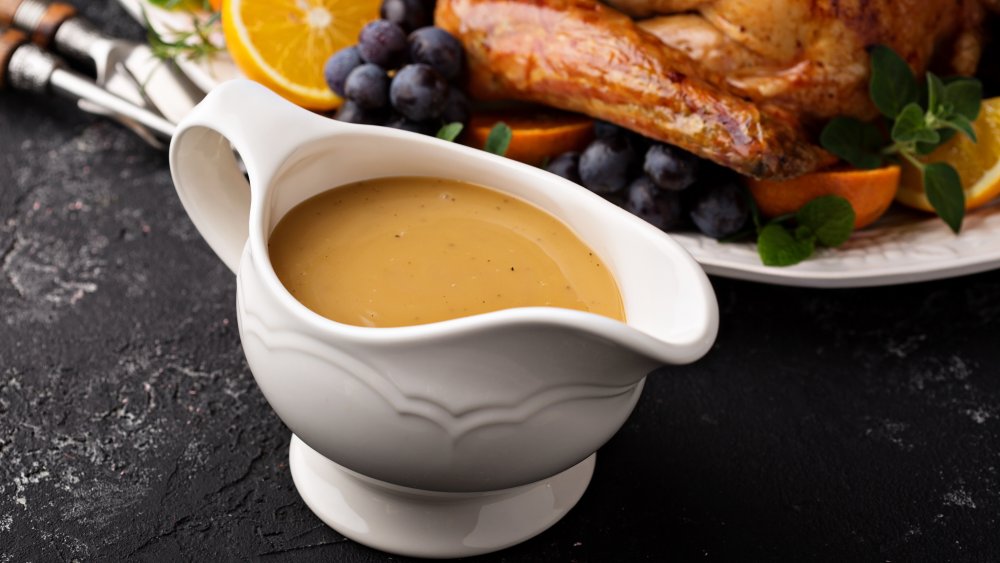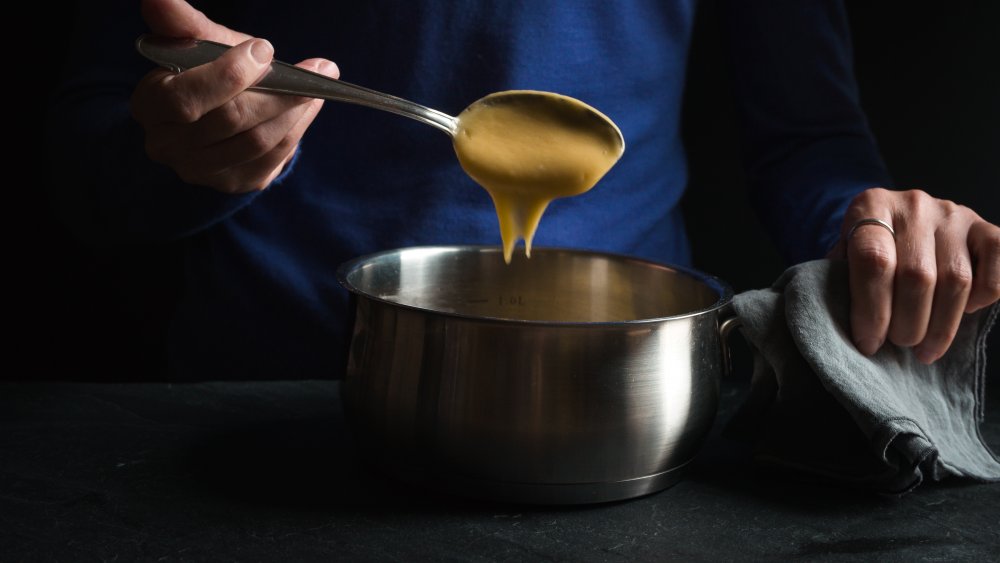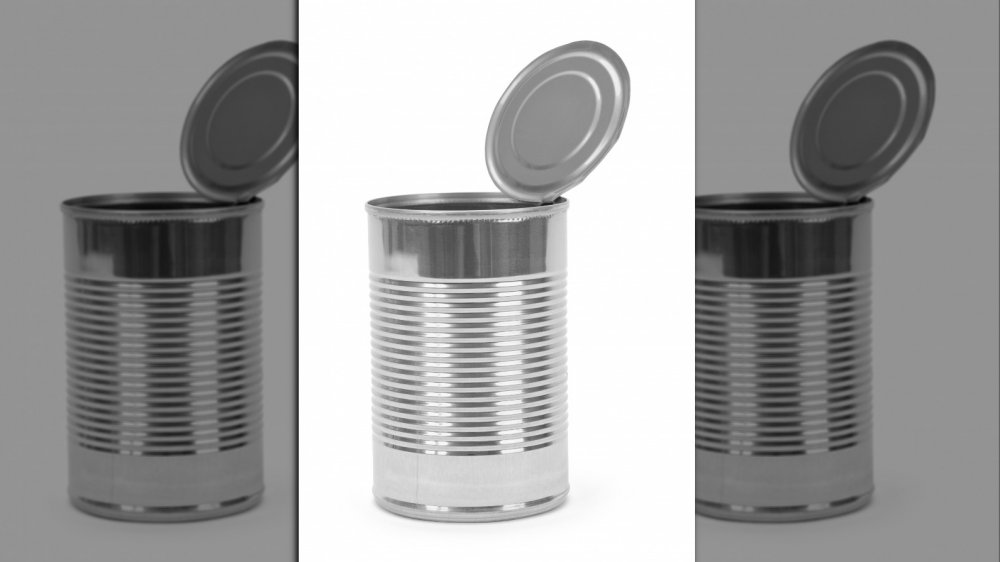The Big Mistake You're Making With Your Gravy
Halloween is over, and you know what it's time for? Peppermint Mocha Frappuccinos! Well, yes, Starbucks will be serving those up by now. But there's one more often-overlooked holiday on the horizon before it's time to start decking the halls and fa-la-la-la-ing and wondering what on earth is a figgy pudding and why would anyone want to eat one?
Yes, it's time to start planning your Thanksgiving dinner. If you're going to go traditional with a turkey, there's one condiment that's pretty much de rigueur, and for once, it's not ketchup. Of course, we're talking about gravy. Too many times, however, this seemingly simple side dish turns into a last-minute stumbling block when it comes out all lumpy and gluey with a texture strangely reminiscent (should you be so ancient as to date back to the pre-glue stick era) of that Elmer's paste that used to be a staple of every elementary school classroom. Perhaps not too surprising, since GPB points out that paste, like gravy, is primarily made up of flour and water. If you want your gravy to be actually pourable and edible by anyone over the age of 6, though, the secret to good gravy lies in paying close attention to texture.
It's all in the roux
TODAY spoke with Food Network star Sunny Anderson and she revealed that you can't make smooth gravy without starting with a roux. A roux, she explains, is a 1:1 mixture of flour and fat, and says that combining the flour with fat will allow it to slowly mingle with the pan juices and thicken them up instead of clumping and lumping and making a mess. She says that all you need is about two tablespoons of roux (half flour, half fat) to thicken up to two cups of gravy.
Ok, so that's the why of the roux, but how do you do it? Start by deglazing the pan (after you take the turkey out) with chicken broth or wine, then save the pan drippings. Let them cool, then skim excess fat off the top. Don't toss the fat, though, since you'll be using it for the roux. Mix 4 tablespoons of that fat (or use butter to make up the difference if you chose a skinny turkey) with 4 tablespoons flour, whisk until smooth, and cook until the flour's not so raw. Slowly whisk in the reserved pan juices, cook until thickened and season to taste. Oh, and if you've messed up somewhere along the line and there are a few lumps, don't worry. Just put the gravy through a sieve when no-one's looking, then serve it up like it's been perfect all along.
A cheater's tip for super-quick gravy
If you really don't want to go through the bother of making your own gravy, there's always the canned kind. It's not (really) cheating, as long as you take a teensy bit of extra bother to tweak it a bit. As cookbook author Melissa Clark told TODAY Food: "You can doctor up canned gravy and make it taste homemade by adding the turkey drippings." She says to still deglaze the turkey pan post-roasting, again using wine, broth, or water, then pour the gravy into the pan and let it simmer along with the pan drippings. AllRecipes also suggests a few more additions to customize your canned gravy, including sautéed shallots or onions, chopped fresh herbs, or ground pepper. They even offer a few slightly more out-of-the-box (or can) options, including stirring in a half teaspoon of Dijon or coarse-ground mustard or a few drops of fish sauce for some extra umami.
And if you don't like the pale color of canned gravy, you could always take a tip from this recipe for Groovy Gravy (via The Star) and add some pureed carrots or maybe even a few spoonfuls of mashed sweet potatoes or cooked pumpkin. Whether or not your guests like the flavor, the bright orange color will certainly be eye-catching! Plus, it's one way to sneak in a few added nutrients to a holiday food not known for its health benefits.


